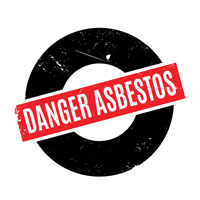MENU
- Home
- Overview
- Attorneys
- Practice Areas
- Firm News
- Blog
- Contact
 Despite the known link between mesothelioma and asbestos exposure, asbestos is not completely banned in the United States and risk for exposure still exists. There is no known cure for mesothelioma which can take 20 to 50 years to develop after exposure occurs. Asbestos exposure can happen at work, at home, or in schools, and can occur naturally in the environment. Secondary exposure is also possible when workers who are unaware of the presence of asbestos on the worksite wear contaminated clothing home and expose their families.
Despite the known link between mesothelioma and asbestos exposure, asbestos is not completely banned in the United States and risk for exposure still exists. There is no known cure for mesothelioma which can take 20 to 50 years to develop after exposure occurs. Asbestos exposure can happen at work, at home, or in schools, and can occur naturally in the environment. Secondary exposure is also possible when workers who are unaware of the presence of asbestos on the worksite wear contaminated clothing home and expose their families.
At first, asbestos was hailed as a miracle fiber for its many applications. Before it was recognized as a hazardous substance, it was used in some 3,000 household and industrial products. Certain industries have the most concentration of past and current asbestos use. As such, these workers are most at risk for asbestos exposure. The construction industry is number one for workers’ risk, including but not limited to, plumbers, electricians, drywallers, painters, plasterers, insulators, masons, tile setters, roofers, and sheet metal workers. Many more day laborers, such as cleaning crews, can also suffer asbestos exposure without realizing it. This is because asbestos particles can become airborne and be inhaled or contaminate clothing.
Another group at high risk include those in the shipbuilding industry, including ironworkers, machinists, electricians, boilermakers, welders, ship fitters, and mill wrights. Those in the Navy who used the ships have an exposure risk as well. Asbestos has been used in many materials by the Armed Forces in their trucks, tanks, military barracks and mess halls, and for aircraft gaskets, engine shields, and brakes.
Stealth or secondary exposure can occur in cases of contaminated office and business spaces and schools. A substantial number of people have developed mesothelioma without having worked directly with asbestos in industrial settings. Any building material tainted with asbestos that is subsequently disturbed for renovations can expose workers and building occupants to asbestos dust. Examples include vermiculite filler for insulating homes, putty containing asbestos, and housing developments built upon asbestos contaminated soil. It should be stressed that there is no level of asbestos exposure that is considered safe or acceptable.
First responders on the scene of the World Trade Center’s collapse on September 11, 2001 were subjected to air heavily contaminated with the dust and debris from the disaster. Many hundreds of tons of asbestos were used in building the twin towers. The air contained harmful particles that, after being inhaled, traveled through the respiratory system, settling in the chest and lungs. Years later, many of the workers who helped sift through the rubble to look for victims are developing mesothelioma and other lung diseases and cancers. A fund has been established that offers free medical care to first responders, firemen, policemen, medical personnel, volunteers, and residents, if they developed mesothelioma or other cancers after 9/11.
If you or someone you love has been exposed to asbestos and is suffering from mesothelioma, the Wilmington mesothelioma lawyers at Jacobs & Crumplar, P.A. can help. We have extensive experience helping victims of asbestos exposure obtain justice and compensation for their illness. Call 302-656-5445 or contact us online to schedule a free consultation. From our offices in Wilmington and Georgetown, Delaware, we assist individuals and families throughout the state.